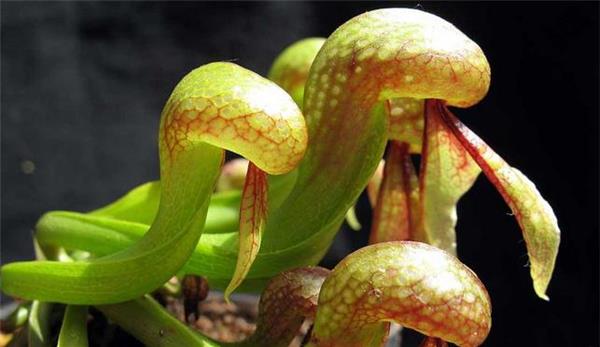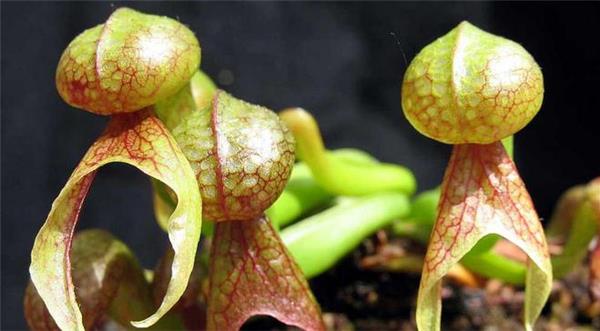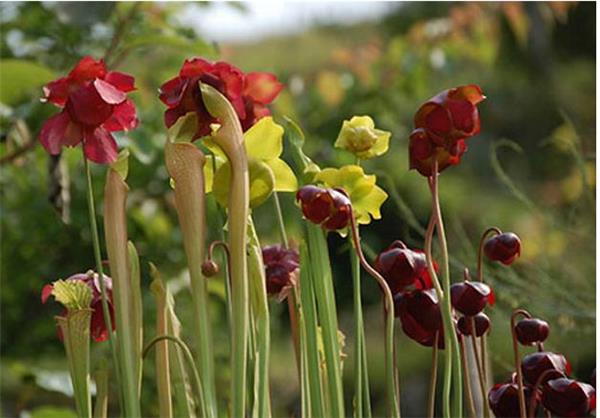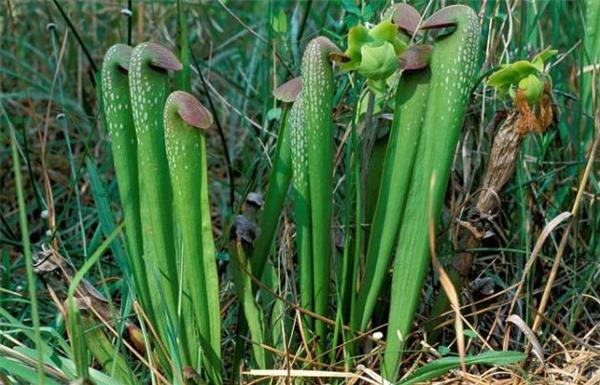[cobra bottle grass] how to raise cobra bottle grass
Many friends do not have a special understanding of the cultivation method of cobra bottle grass, and there will always be some trouble in the breeding process. Today, I would like to introduce the cultivation method of cobra bottle grass, let's have a look at it.

Introduction of Cobra bottle Grass
Cobra bottle grass is one of the genera of the family Cryptomellidae, which is an insectivorous plant, mainly distributed in northern California and Oregon.
The leaves of cobra bottle grass have two types. The leaves are rosette-shaped, and each adult growing point is composed of 3 to 14 leaves. The leaves of the seedlings were simple tube-shaped and the ends were acuminate in 2 to 3 years. Young leaves are generally 1 to 3 centimeters long and are reddish green to red. After that, the leaves of Naja naja atra changed to the mature state. The mature leaves have the function of catching insects, which are 20 to 80 cm long and hollow, with tubular in the lower part and spherical in the upper part and expanded forward. There is a 10 to 20 mm cavity at the bottom of the leaf protuberance, which is the only opening in the leaf. The edge of the bottle mouth bends inward, forming a shape similar to the mouth of a lobster cage. The mouth of the bottle is connected to a binary fishtail-shaped appendage. There are nectaries on the back of the appendage and around the mouth of the bottle.

The culture method of cobra bottle grass
Temperature: like warm winter and cool summer, the suitable temperature for growth is 10-20V, more hardy. In winter, the plant is dormant, and the temperature should not be lower than-5 °C, but it is best to maintain a temperature above 8 °C. It is not tolerant to dry and high temperature in summer, and the suitable temperature for growth is 20 ~ 26 ℃. Shading, environmental water spraying and strengthening ventilation should be adopted to create a cooler environment.
Light: like the semi-overcast environment, strong sunlight will burn the leaf tube. From late spring to early autumn, you should pay attention to shade, cover 50% to 60% of the sunlight, or place where there is enough scattered light to avoid direct sunlight. At other times, plenty of light is needed. Plants that fully receive sunlight in the open field in winter and spring are often greener than bottle-shaped leaves cultivated in greenhouses or greenhouses.
Watering: like wet soil environment, not resistant to drought. The growing period should be well watered to keep the substrate moist. Control watering in winter and moist it a little. The water temperature should be prevented from getting too high in summer, otherwise it will cause rotten roots. Rain Water should be used for watering. Avoid watering water containing calcareous matter.
Environmental humidity: like the humid environment, not resistant to drying, the growing period should often spray water to the plant and its surroundings, in order to keep the environment moist. Spraying more foliar water in summer can not only reduce the ambient temperature, but also avoid the adverse effects of hot and dry wind on plants.

Fertilization: nitrogen-based fertilizer is applied once every semimonthly in spring, 0.2%-0.3% fertilizer can be used to irrigate the root, or diluted fertilizer can be directly poured into the pest bag for absorption. The species with red leaves and red veins should pay attention to the cooperation of nitrogen, phosphorus and potassium, so as to make the leaves bright and improve the ornamental value. Do not apply nitrogen fertilizer simply or too much, or the leaves will fade and fade. Fertilization should be light rather than thick, thick fertilizer is easy to cause fertilizer damage. When dormant in winter, fertilizer should be stopped.
Upper basin: like barren acidic soil. The matrix is made of peat soil, water moss, perlite and other materials, or it can be planted with peat soil alone. The bottom of the basin should be padded with broken bricks or pieces. Planting should not be too deep, so that half of the rhizome should be exposed to the soil. After planting, cover the basin with a small amount of moss to moisturize the basin, and then place the bowl in shallow water at a depth of 3 to 4 meters.

This is the end of the introduction of the cultivation method of cobra bottle grass. I believe that after reading it, we have a certain understanding of the cultivation method of cobra bottle grass. I hope the relevant knowledge introduced today will be helpful to all of you.
Related
- Wuhan Hospital Iron Tree Blooming Result Was Instantly Frightened by the Gardener Master
- Which variety of camellia is the most fragrant and best? Which one do you like best?
- What is the small blue coat, the breeding methods and matters needing attention of the succulent plant
- Dormancy time and maintenance management of succulent plants during dormancy
- Minas succulent how to raise, Minas succulent plant pictures
- What are the varieties of winter succulent plants
- How to raise succulent plants in twelve rolls? let's take a look at some experience of breeding twelve rolls.
- Attention should be paid to water control for succulent plants during dormant period (winter and summer)
- Watering experience of twelve rolls of succulent plants
- Techniques for fertilizing succulent plants. An article will let you know how to fertilize succulent plants.



